Note: Also displayed under PA Rifles.

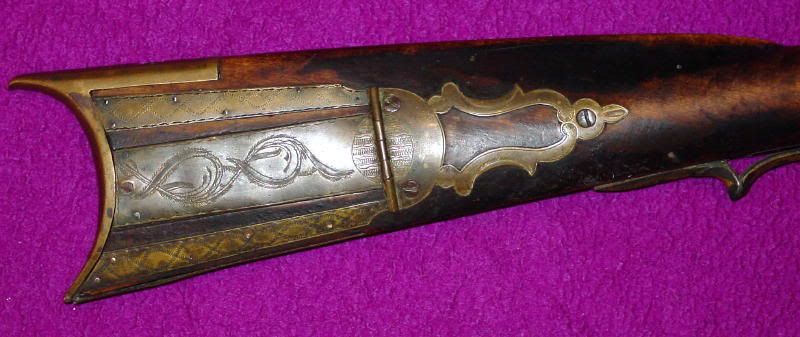
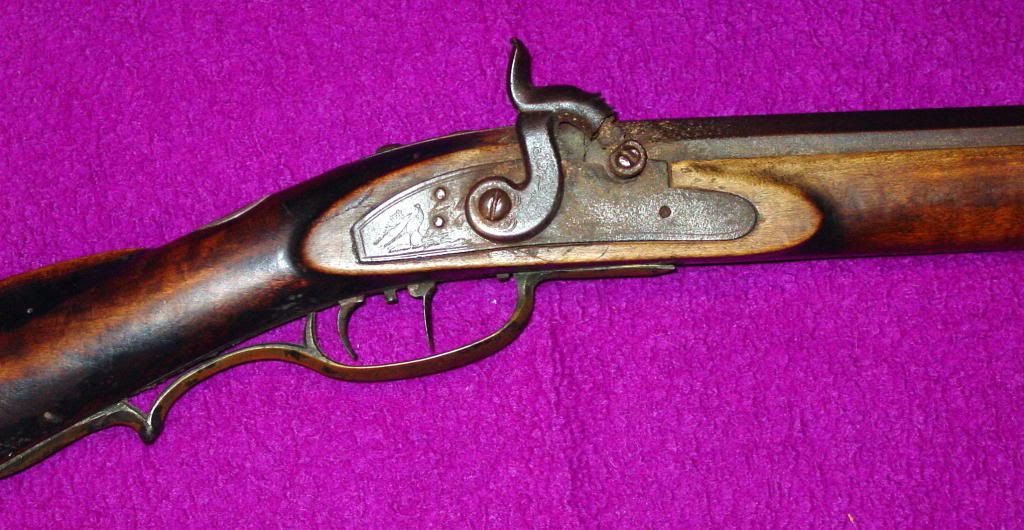
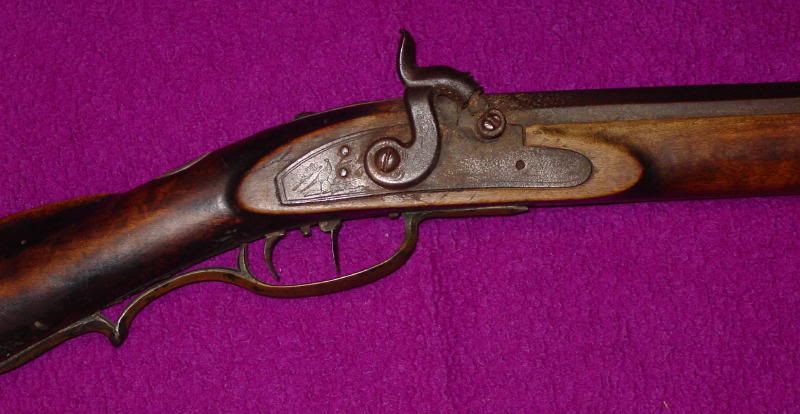
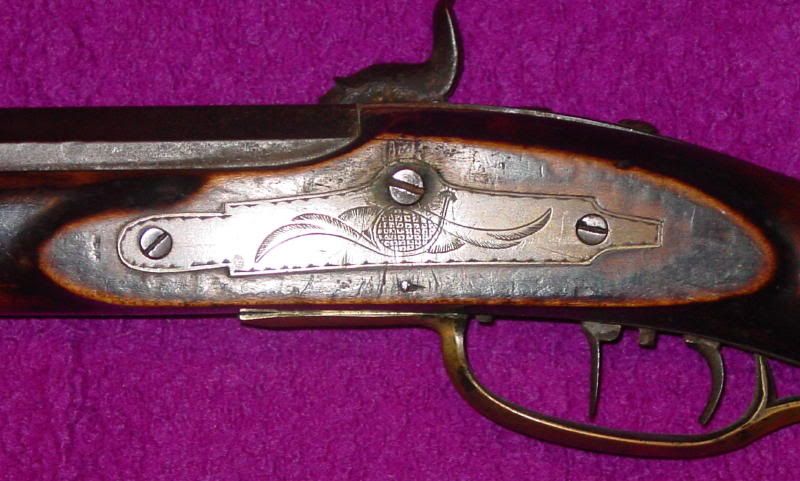
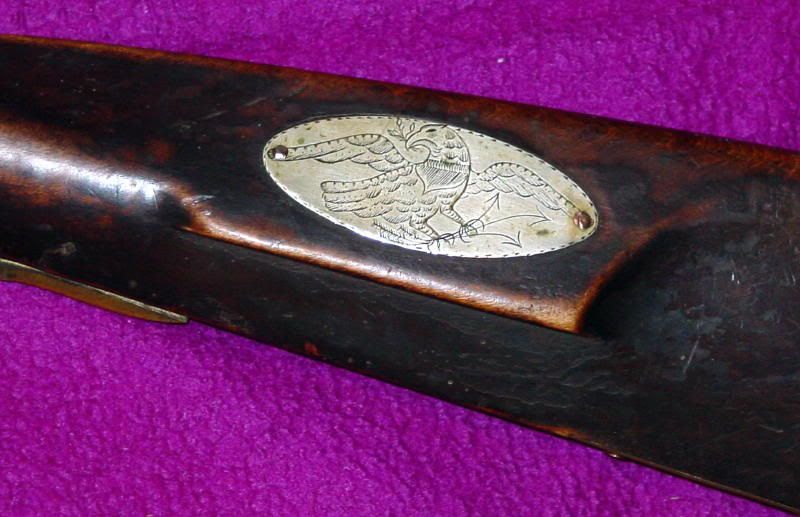
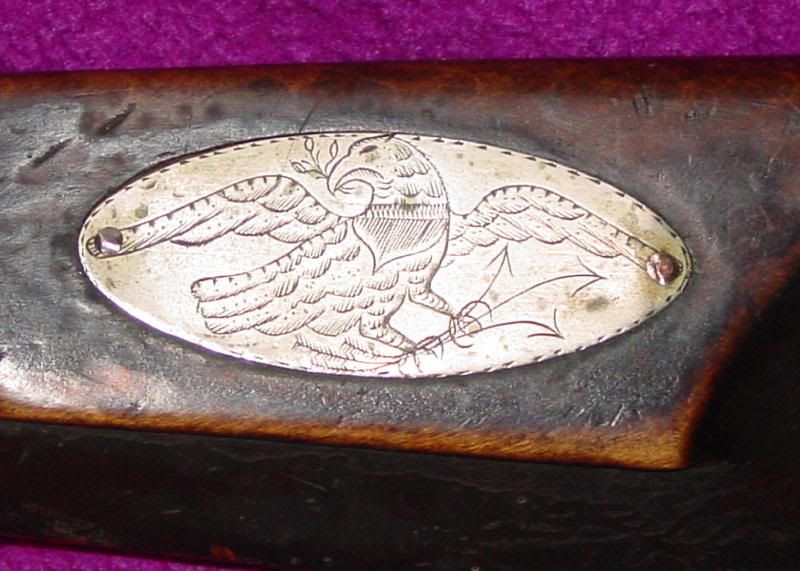
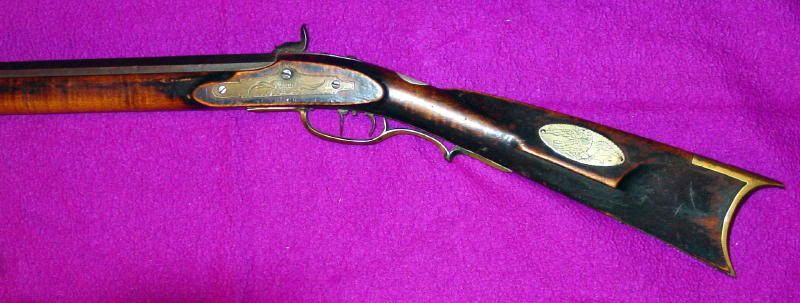


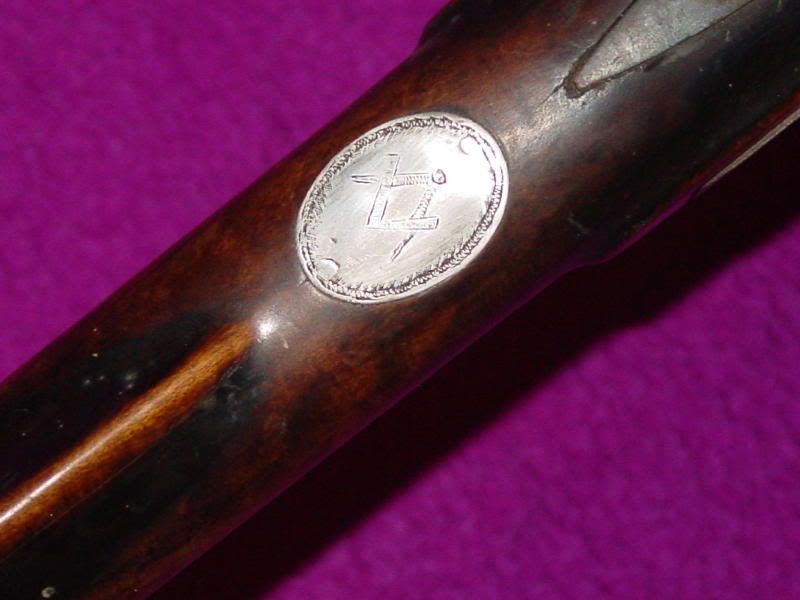
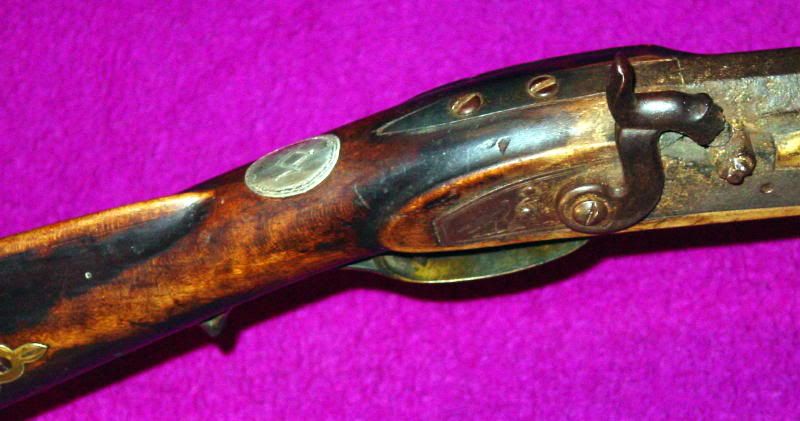
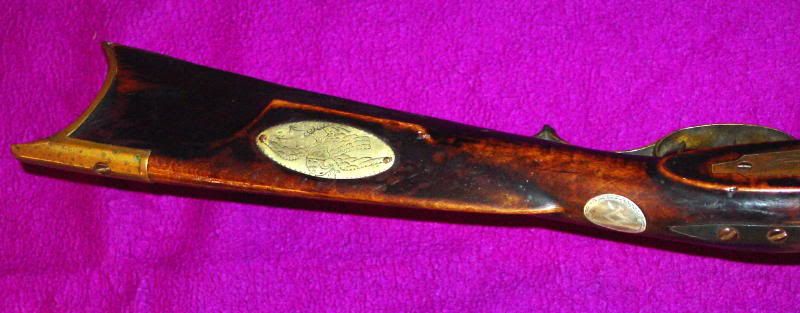
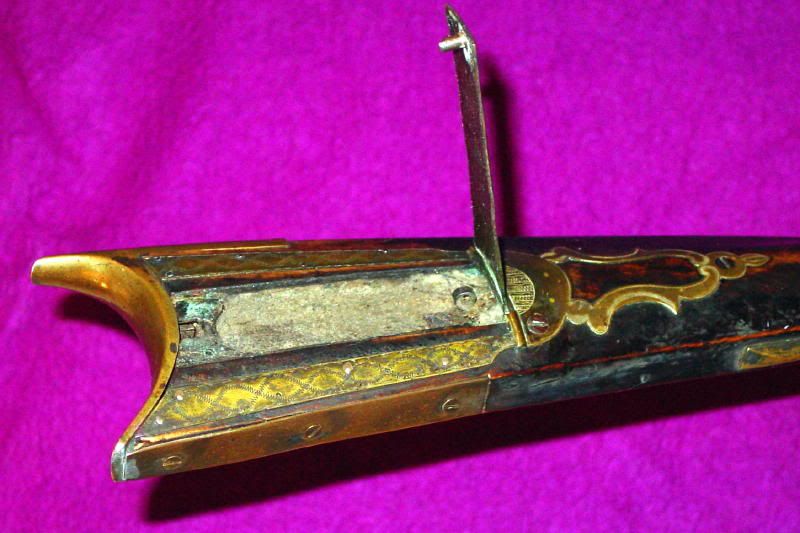


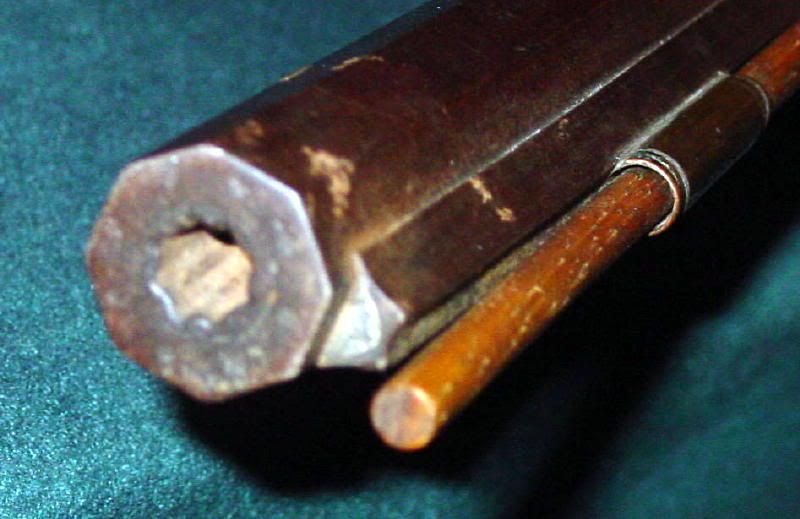
Length overall: 56 7/8"
Barrel length: 41"
Width across flats: 1"
Caliber: .32
Rifling: 8 groove
Length of pull: 12 5/8"
Weight: 10 lbs. 6 oz.
This rifle was originally a fullstock. The original brass nosecap was re-used when it was changed to halfstock.
As I think you know, George Kopp was living and working in Haldane, Ogle County, Illinois, for a little over ten years. He is listed as a gunsmith here in both the 1870 and 1880 census. I cannot say for sure where this rifle was made, but it certainly appears to be from the right period.
Comments:
Look at the William Lloyd and compare. I'd have to guess this rifle was made in Huntingdon Co. and moved to Illinois with Kopp as the general style predates the Civil War by at least a decade... If conversion to a halfstock at a later time is correct.
As a side note I've spoken with Jim Whisker and have good reason to believe that the eagle motif and other inlays were used commonly by the McConnellstown area makers and that the original pattern(s) may still exist.
My opinion for what it might be worth is a c. 1840 rifle made in PA and converted perhaps two decades later. Whether it went with Kopp and his family, or whether a happy coincidence of the rifle and Kopp in Illinois is lost to time and memory.
====================================================
The catch is....that George Kopp, like many other gunsmiths who were already "set in their ways", never changed his style from what this one shows. There is a G KOPP rifle pictured in my book, Gunmakers of Illinois, 1683-1900, Vol. II that was made for one of Kopp's neighbors (James Magne) here in Haldane, Ogle County, Illinois, and is still in that family. The buttstock is identical, including the cheekpiece eagle, but was made without a patchbox. That one has a heavier barrel, and is octagon-to-round to reduce weight, but the details in style are the same.
Kopp had returned to Pennsylvania by early 1881, and died there in 1890.
=====================================================
Heck of a nice rifle with a good eagle and patchbox. If it was originally full stocked, the cut down procedure was very well done, and the barrel rib looks correct. The muzzle cap set up looks original, as well. Guess I am not completely convinced that it was not always a half stocked piece. But, who cares? It holds the necessary qualifications to be displayed in the Library with its earlier Kopp cousins.
=====================================================
NIce looking rifle, particularly with the trademark side plate with their "swooish" figure engraved on it, and the fine eagle in the cheekpiece. I think the thumb piece with its large Masonic emblem, square and compass, is a fascinating detail.... never seen it on the thumb piece before. This is one rifle I'd like to know the butt width on, since it looks very thin in one photo. Hard to believe it was made in Illinois with all the PA features, but who knows? XXXX, do you know when George Kopp arrived in IL?
The half-stock vs. full-stock issue is always interesting. Normally when a nice early style nose cap appears on a half-stocked rifle, particularly when set beyond the rear pipe a little ways, it immediately makes one think it was a cut down full-stocked gun. But that's not always true. If originally a full-stocked gun, it should have a faint forestock line along the exposed portion of barrel beyond the nose cap, where slightly more corrosion has taken place above the line, a little less, or smoother, below. If no trace of a forestock line exists on this rifle, and I can't see any from the photos (altho they don't show this type detail well), I'd think it's an original half-stocked gun from what I can see. Neat little rifle, probably a little later than all the "traditional" decoration seems to indicate, perhaps mid-1850s.
====================================================
I believe we all agree that this rifle is a product of George Kopp regardless of whether it was originally a full stock or a half stock. Then there is the question of where the rifle was made. I have to believe that if Kopp made rifles for about 35 years before he immigrated to Illinois, he probably would not have changed his style very much during the ten years he worked in Illinois. The side plate, cheek inlay, general architecture and signed barrel indicate this is a product of G. Kopp. What looks like, to me, a thinner butt stock and thinner butt plate might indicate that this is a rifle of later manufacture?
Keep in mind that I am not a collector, but merely a student of longrifles. I do have to ask, since Kopp worked in two different locations, Pennsylvania and Illinois, and in the absence of any marking on his rifles that indicate location of manufacture, how do we know that either of the G. Kopp rifles in the Library weren't made in Illinois rather than Pennsylvania?

